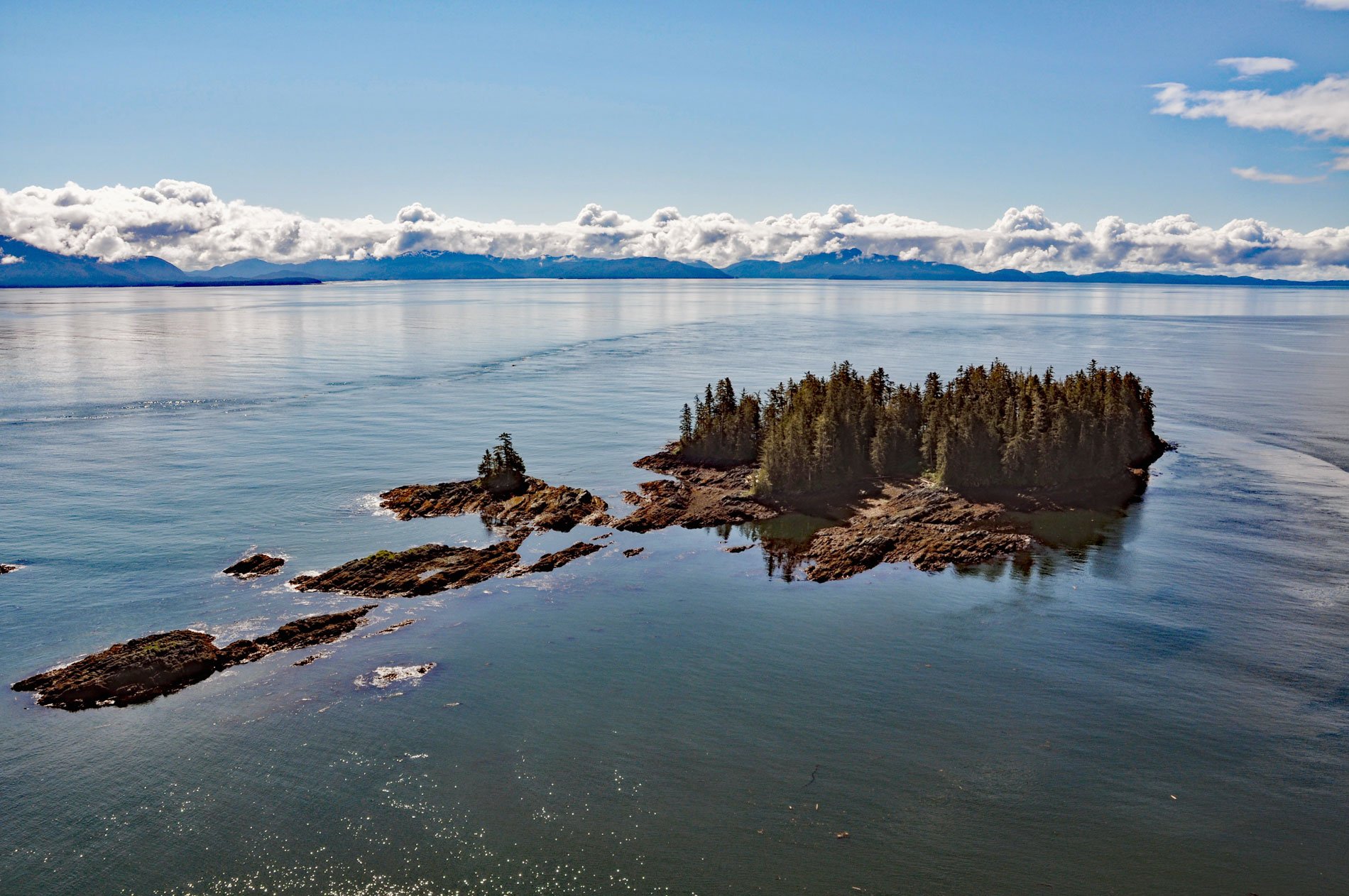Beauclerc Island is in Sumner Strait, at the entrance to Port Beauclerc on Kuiu Island, in the Alexander Archipelago of Southeast Alaska, about 80 miles (129 km) southeast of Sitka and 11 miles (18 km) southwest of Point Baker, Alaska. The island’s name is taken from Port Beauclerc. Port Beauclerc is an embayment on Kuiu Island that extends northwest for about 7 miles (11 km). Captain George Vancouver named the bay on September 11, 1793, after Lord Amelius Beauclerk, who was a famous Royal Navy officer known by Vancouver while both served in the West Indies. In addition to the island and bay, other places named after Beauclerk include Point Amelius, Point Saint Albans, Beauclerc Peak, and Amelius Island, all on the eastern side of Kuiu Island.
Kuiu Island is separated from Kupreanof and Prince of Wales Islands by Sumner Strait to the east, and from Baranof Island by Chatham Strait to the west. The island is 65 miles (105 km) long, and 6 to 14 miles (10 to 23 km) wide. The name is from the Tlingit and was first published as “Ostrov Kuyu” or “Kuyu Island” in 1848 on Russian charts. The Kuiu Wilderness and Tebenkof Bay Wilderness are federally designated wilderness areas within the Tongass National Forest. Together, the two areas protect old-growth temperate rainforests rising from coastal estuaries to subalpine meadows. Kuiu Island is deeply incised by several fjords that nearly bisect the island leaving only narrow land bridges in several places. These present natural migration obstacles to wildlife that must funnel through these constrictions to access preferred habitat. Examples include the land bridge separating the Bay of Pillars from Port Camden which is only 1.8 miles (2.9 km) wide, and the land bridge between Port Camden and Threemile Arm which is only 1.2 miles (1.9 km) wide. Before European colonization, significant populations of Tlingit people lived on the island, particularly in Tebenkof Bay. These narrow land bridges were strategically important to the Tlingit for canoe portages, allowing access to a vast area of coastline. The deep fjords confounded early attempts to accurately map the island but this was completed in 1793 by Joseph Whidbey and James Johnstone, two of the officers on the Vancouver Expedition.
Sumner Strait is about 90 miles (145 km) long and up to 10 miles (16 km) wide, extending for 60 miles (97 km) from the mouth of the Stikine River to Kuiu Island and then 30 miles (48 km) south-southwest to the Gulf of Alaska. The strait separates Mitkof Island, Kupreanof Island, and Kuiu Island on the north from Zarembo Island and Prince of Wales Island on the south. The English merchant William Brown, captain of the thirty-gun frigate Butterworth, was the first European to visit Sumner Strait in 1793. The strait was charted later that same year by Lieutenant James Johnstone. It was named in 1875 by William Healey Dall, one of the earliest scientific explorers of Alaska, in honor of Charles Sumner, a politician from Massachusetts. The Cape Decision Light at the southern tip of Kuiu Island is an important navigation aid marking the south entrance to Sumner Strait. Read more here and here. Explore more of Beauclerc Island and Sumner Strait here:

